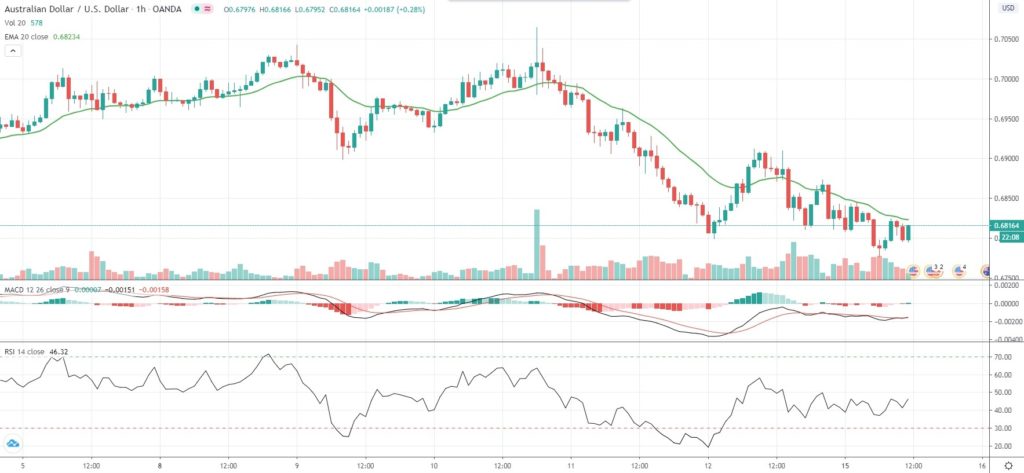AUD/USD plunged to a fresh two-week low during the early phase of European trade and remained under pressure within the area around 0.6800 later on Monday, as risk-sensitive currencies such as the Aussie retreated on concerns about a second wave of coronavirus infections, with new cases emerging in Beijing and daily cases rising to a record in the United States.
Beijing reported 79 infections during the past four days, or a cluster of cases not seen in the capital city since February. On Monday security checkpoints were established and schools were closed in several Beijing districts, while people were ordered to test for COVID-19. According to reports, new cases were related to Beijing’s Xinfadi, the largest wholesale market in Asia.
At the same time, on Saturday the United States reported more than 25,000 new confirmed cases, as several states, including Alabama, Texas, Arkansas, North Carolina, Florida and California, registered a record number of new COVID-19 infections per day and a record number of hospitalizations.
The US Dollar Index, which reflects the relative strength of the greenback against a basket of six other major currencies, steadied at 97.16 on Monday, while being up for a third straight trading day.
As of 11:42 GMT on Monday AUD/USD was losing 0.75% to trade at 0.6815, after earlier touching an intraday low of 0.6777, or a level not seen since June 2nd (0.6775).
AUD traders will likely now focus on tomorrow’s RBA Meeting Minutes release. The Reserve Bank of Australia kept its cash rate without change at the record low level of 0.25% at the policy meeting on June 2nd, as the country is facing the most severe contraction since the 1930s. The Minutes from the bank’s meeting in May showed Australian economy was expected to shrink by nearly 10% during the first half of 2020, with most of the contraction anticipated to occur during the second quarter.
RBA’s policy makers said they were ready to boost government bond purchases again, if necessary, to achieve the yield target of 25 basis points on 3-year Australian Bonds and to “ensure bond markets remain functional.” The cash rate will likely remain unchanged until policy makers see progress towards full employment and inflation rate within the bank’s 2%-3% objective.
Meanwhile, on today’s macroeconomic front, the Federal Reserve Bank of New York will report on manufacturing activity in the area at 12:30 GMT. The New York Empire State Manufacturing Index probably rose to -27.5 in June, according to market expectations, from a level of -48.5 in the prior month. In May, new orders and shipments continued decreasing at a sharp rate, while delivery times were slightly shorter.
Bond Yield Spread
The spread between 2-year Australian and 2-year US bond yields, which reflects the flow of funds in a short term, equaled 9.6 basis points (0.096%) as of 10:15 GMT on Monday, up from 7.7 basis points on June 12th.
Daily Pivot Levels (traditional method of calculation)
Central Pivot – 0.6859
R1 – 0.6919
R2 – 0.6971
R3 – 0.7031
R4 – 0.7091
S1 – 0.6807
S2 – 0.6747
S3 – 0.6695
S4 – 0.6643






